The history of the Gibson Black Beauty
Hackett, Hawkins and Heafy on the be-suited 'Beauty's origins and evolution
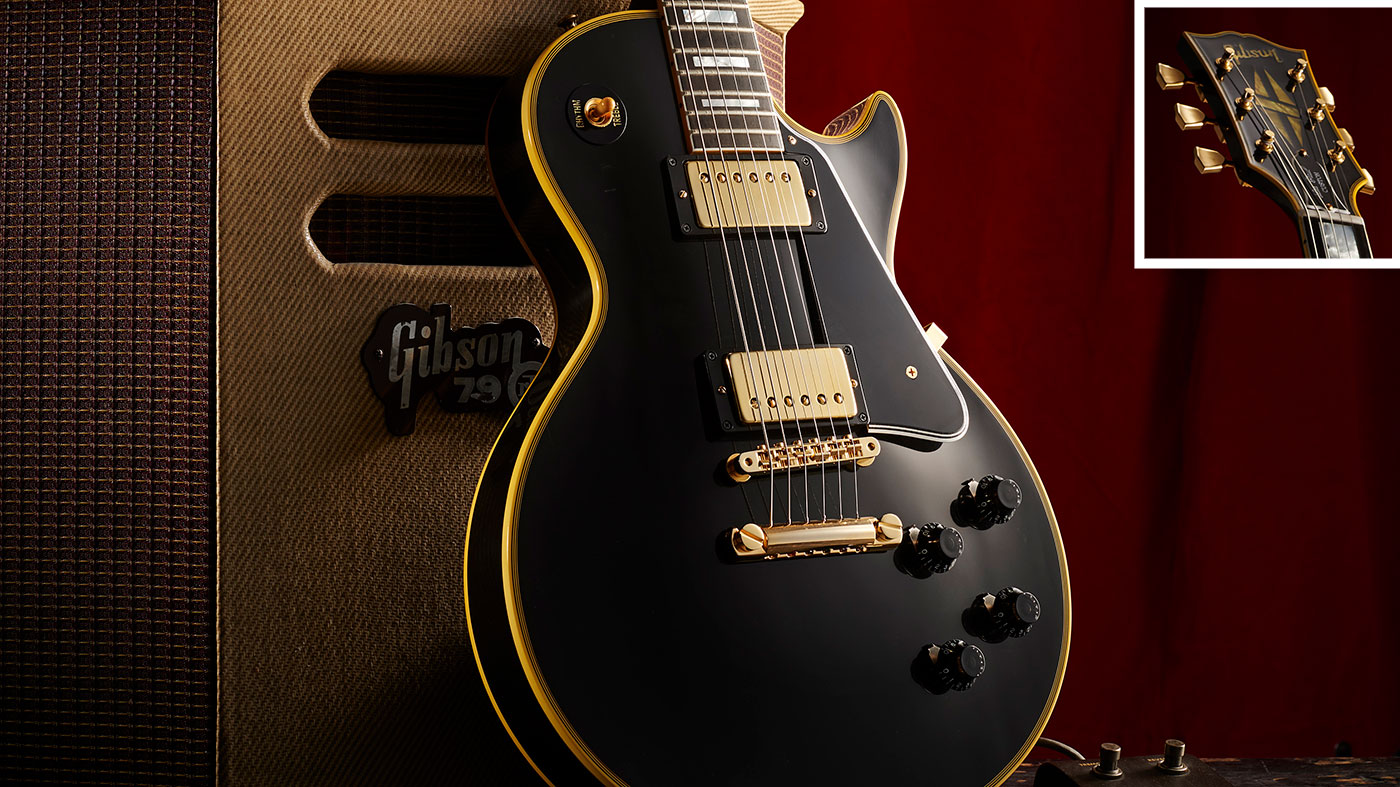
Introduction
It was the executive model that raised the spec of the Goldtop and armed a roll-call of seminal players. 60 years since the iconic ’57 incarnation, this is the true story of the Les Paul Custom - with testimony from the stars who wielded it…
To the window-shoppers of London’s Tin Pan Alley, it was a new arrival to quicken the pulse. The jet-black lustre of the hourglass body. The shimmer of 24-karat hardware. The twinkle of the diamond headstock inlay. It was 1959, and with the lifting of restrictions on US imports, the mythologised Gibson Les Paul Custom was suddenly a tangible reality.
I used to think anyone who’s got a Les Paul Custom has already made it
Steve Hackett
“When I was a kid,” Steve Hackett tells us, “I used to walk down Shaftesbury Avenue and Denmark Street, staring in the windows, looking at instruments I couldn’t afford. And I used to think anyone who’s got a Les Paul Custom has already made it.”
And that, of course, was what the Gibson boardroom wanted players to conclude when faced with the Custom. The firm had already planted its flag deep into the solidbody sector with its inaugural Les Paul release, the 1952 Goldtop. But within two years, Gibson had spotted the potential for a higher-spec executive model, priced a princely $325 to its predecessor’s $225 (and in a different league to the $99 Junior).
“You have all kinds of players out there who like this and like that,” Gibson president Ted McCarty noted in 1992. “Chevrolet had a whole bunch of models, Ford had a whole bunch of models. So did we.”
It was dubbed the ‘Black Beauty’, and lived up to the billing. While Gibson had identified the Custom’s demographic, it was Les Paul himself who insisted the ’54 original should be high-gloss black, for reasons of unabashed showmanship.
“Everybody wanted to know, why black?” he reflected in his book. “And I said, ‘Because you can see your hands move when you’re on the stage and it looks good with any outfit you wear.’”
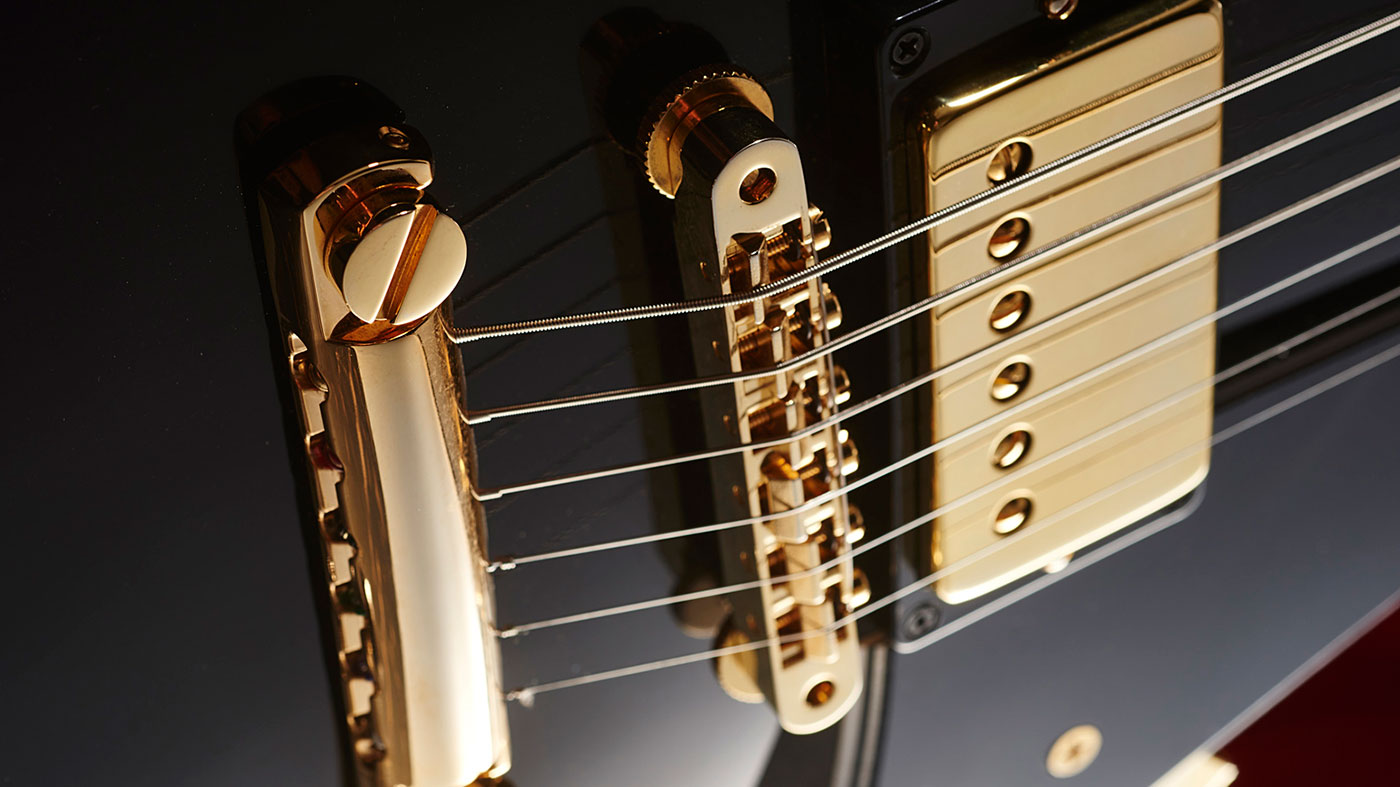
Luxury line
Luxurious flourishes were sprinkled throughout the Custom. Gold-plated hardware was complemented by the split-diamond inlay lifted from Gibson’s flagship Super 400, while the truss rod cover was now embossed for swift identification.
Dig a little deeper, though, and the ’54 revealed itself as more than a mere cosmetic face-lift. While the Goldtop had offered the familiar splice of a mahogany body and maple cap, the Custom’s seven-ply-bound body was pure mahogany, delivering a warmer, darker tone (it’s interesting to note that Paul felt this timber configuration would have better suited the cheaper model).
60s luminaries from Jimi Hendrix to Robby Krieger all conjured magic with the first-generation Custom
The fingerboard was bound ebony, with block fret inlays usurping the Goldtop’s trapezoids and lower, flatter, faster fretwire prompting the Custom’s second nickname, ‘The Fretless Wonder’. The ’54 Custom, too, was notable as the first Gibson electric to employ the McCarty-conceived ABR-1 tune-o-matic bridge (added to the Goldtop the following year).
Another defining feature of the ’54 was the pairing of bridge P-90 and Seth Lover’s underrated neck-position Alnico 5: a pickup whose aluminium-nickel-cobalt alloy, distinctive rectangular polepieces and gutsy output met the designer’s brief to deliver a new unit that outpunched the DynaSonic used by rivals Gretsch.
“I wanted to be different,” he told Gibson biographer Tony Bacon. “I didn’t want them to be round like DeArmond’s. I don’t like to copy things. If you’re going to improve something then I thought you should make it different.
“Also,” Lover continued, in the same interview, “by making [the polepieces] that shape, I could put screws between for height adjustment. But that pickup was never too popular, because the players would always adjust them up too tight to the strings. They’d get that slurring-type tone and they didn’t like that.”
60s luminaries from Jimi Hendrix to Robby Krieger all conjured magic with the first-generation Custom - but there’s an argument that the ’57 incarnation made even more of an impact. Built upon the same foundations, this new variant upped the artillery with three Lover-designed PAF humbuckers, and although the initial production run only lasted from 1957 to 1961, this fully loaded model left an indelible mark on popular culture.
Before Led Zeppelin financed his “guitar army” of Teles, Standards and doublenecks, the young Jimmy Page could be seen toting a three-pickup, Bigsby-equipped Mk#2 Custom across the London session scene.
Formerly an exponent of the Burst, by 1966, Keith Richards had acquired four Customs, including his memorable ’57 with crescent moon DIY paint-job and bottletop control knobs. Early Stones tours saw an open-G-tuned Custom used for Street Fighting Man and Jumpin’ Jack Flash - although Keef’s patronage of the model was curtailed when two Beauties were stolen from the dissolute Exile On Main Street sessions at Nellcôte.
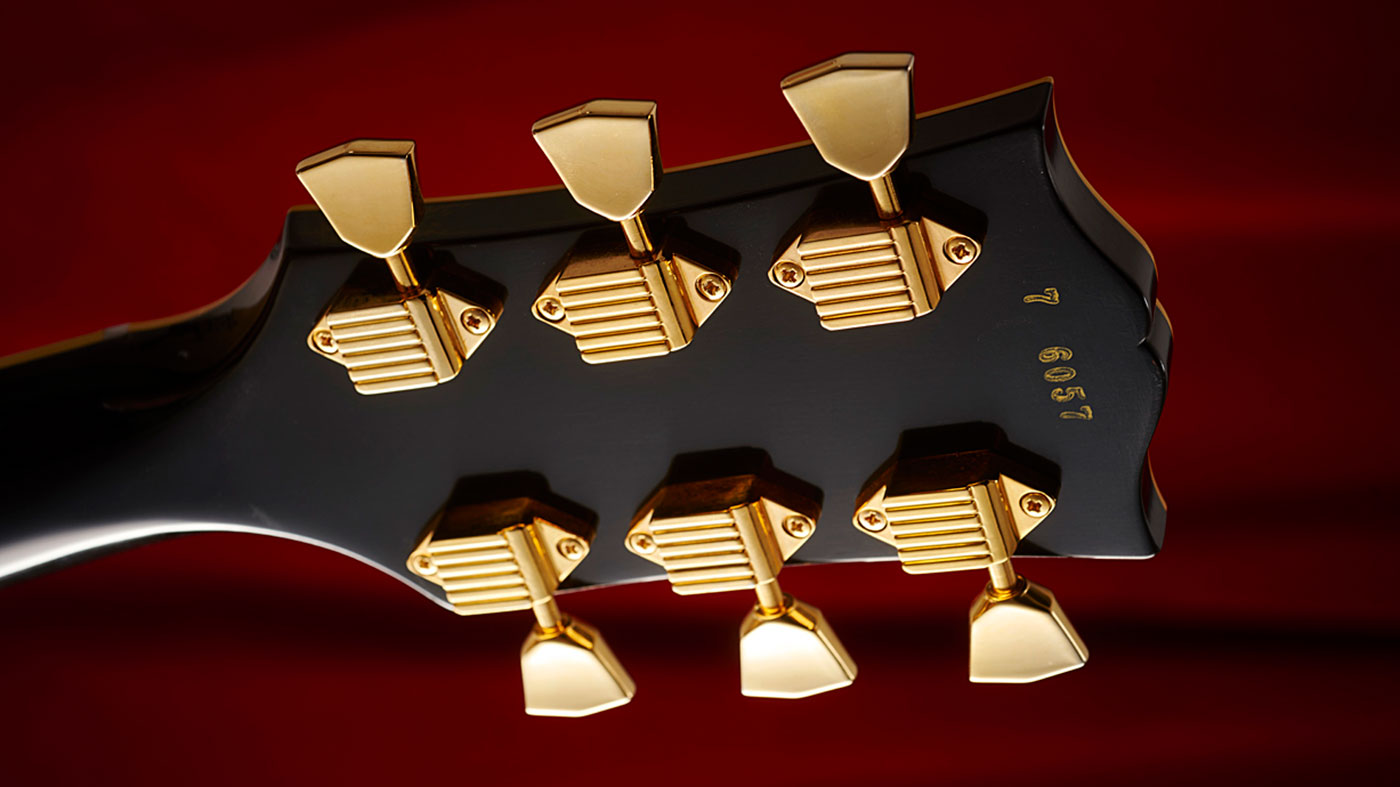
Prog Riches
Even the rising stars of prog-rock were in thrall to the Custom, with Robert Fripp recalling that a ’59 example drove all of King Crimson’s output from 1969’s In The Court Of The Crimson King to 1974’s Red.
I walked out with the Custom for £375. It remains, to this day, the finest Les Paul I’ve ever played
Robert Fripp
“The salesman was pretty loathsome,” he noted of acquiring the guitar in London. “But we’d been given a loan and I had a briefcase with a large sum of cash inside. I asked about a discount for cash and was refused. So I opened the briefcase and showed the manager the money. I walked out with the Custom for £375. It remains, to this day, the finest Les Paul I’ve ever played.”
It’s a sentiment echoed by Steve Hackett: “I bought two Les Paul Customs in 1971. Black with the three gold pickups. I’d just joined Genesis. I did some shows with a Melody Maker, but it fed back and wasn’t really loud enough to cut through the sound of Phil Collins in rehearsal. Just the sound of him acoustically laying into the kit - I’d never worked with a drummer that loud!
“I needed something with more power,” Hackett continues. “And so, when we were rehearsing for Nursery Cryme [1971], I acquired the stuff I needed, including those first Les Paul Customs. Unfortunately, those guitars were both stolen, within two weeks of each other. From 1973, I used a Goldtop. I wish I knew what happened to them…”
If the Custom was a target for thieves, by 1968, replacements were readily available. Having shelved the Les Paul at the start of the 60s, Gibson had sensed the demand for secondhand models sparked by Eric Clapton’s tenure in the Bluesbreakers, and began a new production run that included a Custom reissue.
“The revival of these instruments answers a pressing need,” explained the firm’s Jim Tite. “It will no longer be necessary to search for used models that auction for $700 to $1,000.”
Now priced $545, with twin humbuckers, a maple cap and a wider palette of finishes, the Kalamazoo-built ’68 Custom had arguably lost a little of the original’s identity, but it was still a magnet for influential players.
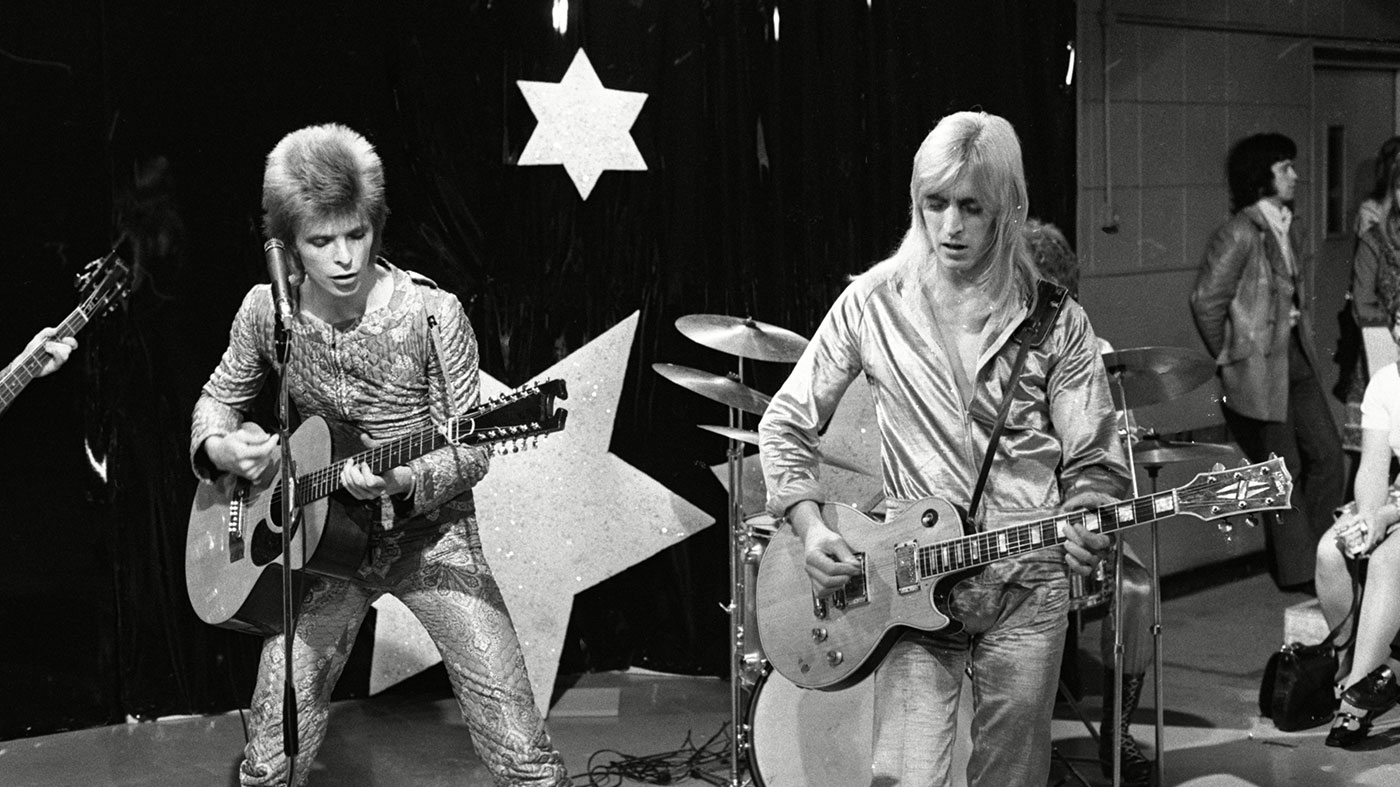
Star power
Mick Ronson would use a stripped-finish ’68 for his Ziggy Stardust-era work alongside David Bowie, and his choice caught the imagination of a young Randy Rhoads.
“In 1972, Bowie played at the Santa Monica Civic Auditorium,” recalled the late Ozzy sideman’s brother, Kelle Rhoads. “That’s where Randy saw Mick Ronson with that Les Paul. At that time, Randy had a black SG. When he got rid of [the SG], he looked for a guitar like Mick’s, and he found it at a Guitar Center - a ’74 Custom.”
In 1972, Bowie played at the Santa Monica Civic Auditorium. That’s where Randy [Rhoads] saw Mick Ronson with that Les Paul
Kelle Rhoads
In the late 70s, while KISS’s Ace Frehley shot fireworks from a three-pickup Custom, British punk took the model back to basics, with Mick Jones using his Beauty to power The Clash’s Give ’Em Enough Rope and Steve Jones bringing snarl to the Pistols’ Never Mind The Bollocks with his 70s example.
“Malcolm McLaren was managing the New York Dolls for a while,” he noted. “When he finished managing them, he brought this guitar back to England. It had a Bigsby, but I took it off because the thing kept going out of tune.”
While the classic Les Paul Custom has rolled on through the decades - its spec sheet broadly sticking to the ’68 reissue - Gibson has spiced the product line with variants, some more successful than others.
In 1972, the Custom ’54 Ltd Edition tipped its hat to the founding father, complete with P-90 and Alnico pickups. In 1974, we welcomed a 20th Anniversary reissue, and in 1987, Gibson unveiled the Custom Lite, with a weight-cutting contoured body that meant it cost more than the regular model (at $1,249 compared with $1,170).
Confusingly, the 35th Anniversary Custom of 1989 featured the ’57-era three-pickup format, while the 1991 Custom Plus debuted a higher-grade figured flame top, and the 1994 Custom ’57 Centennial had gold/ diamond trimmings that verged on gaudy. Just as Gibson’s production line has never stopped rattling off the Custom, so the roll-call of noted exponents has kept on growing.
Rewind to the 90s, and James Dean Bradfield unleashed the fieriest licks of the Brit-rock scene on a white 1990 example, nicknamed ‘Faithful’ and picked up from Macari’s on Denmark Street after the Manic Street Preachers signed with Columbia. “Getting this Les Paul was Shangri-La to me,” reflects Bradfield, who had previously played a Tele Thinline.
“A white Les Paul Custom is not many people’s lead guitar,” he continued, “but I just thought, ‘Steve Jones! Lindsey Buckingham! Mick Jones!’ When I bought it, I remember thinking, ‘I can’t wait for this guitar to be old.’ And now it is. It’s weathered, been on all 12 albums. The neck’s been broken twice, once live, and during recording The Holy Bible [1994]. It’s had four pickup changes…”
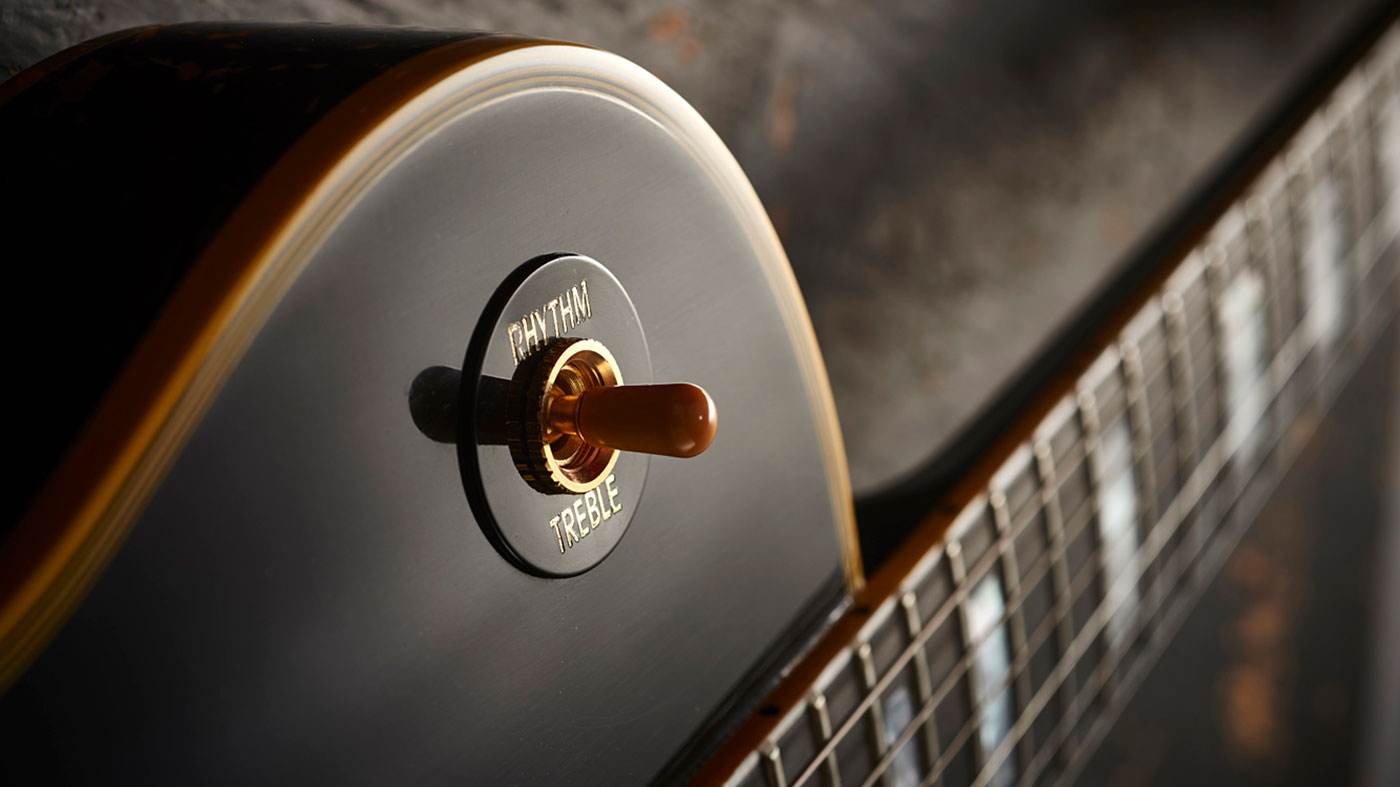
Starting Young
Post-millennium, the Custom has been seen in the hands of some of rock’s most technical players, not least Matt Heafy of Trivium, who has released his own six- and seven-string Epiphone models, souping up the venerable format with active EMGs.
I always thought the Les Paul was the perfect instrument, so I didn’t want to mess with it too much
Matt Heafy
“When I was thinking of doing a signature guitar,” he noted, “I wanted to pick my favourite guitar. And my favourite guitar was one my dad gave me when I was 11 years old. He gave me a Les Paul Custom, which is an absurd thing for an 11 year old to get for their first guitar.
“I played it on most of our records, and it was always my favourite, so when we were engineering [2013’s Vengeance Falls], I sent it to Epiphone and said, ‘Copy this. Make it play as close as possible to this guitar and look like this guitar, and make just a few changes.’
“I always thought the Les Paul was the perfect instrument, so I didn’t want to mess with it too much, aside from just putting my stamp on it. There’s something fortunate about being a Les Paul player, that it translates across multiple guitar players all using the same body.”
60 years down the line, it’s fair to say the Les Paul Custom has never been quite so fêted as its younger sibling, the Standard. And yet, to those who know, this model is the connoisseur’s choice. Having dabbled in Ibanez and Dan Armstrong models, Justin Hawkins of The Darkness is in no doubt of the Custom’s siren call.
“I noticed that after I started playing my white Custom, they started selling a white Les Paul Studio, which is like a stripped-down version. It would annoy me when people said, ‘Oh, he plays a Studio.’ It’s like, ‘No - it’s a Custom!’
“I always wanted to be the white Custom guy,” he concludes. “In every generation of bands, there’d be one player who was the white Custom player. Sex Pistols. Thunder. Manic Street Preachers. There was always one guy that was carrying the torch…”
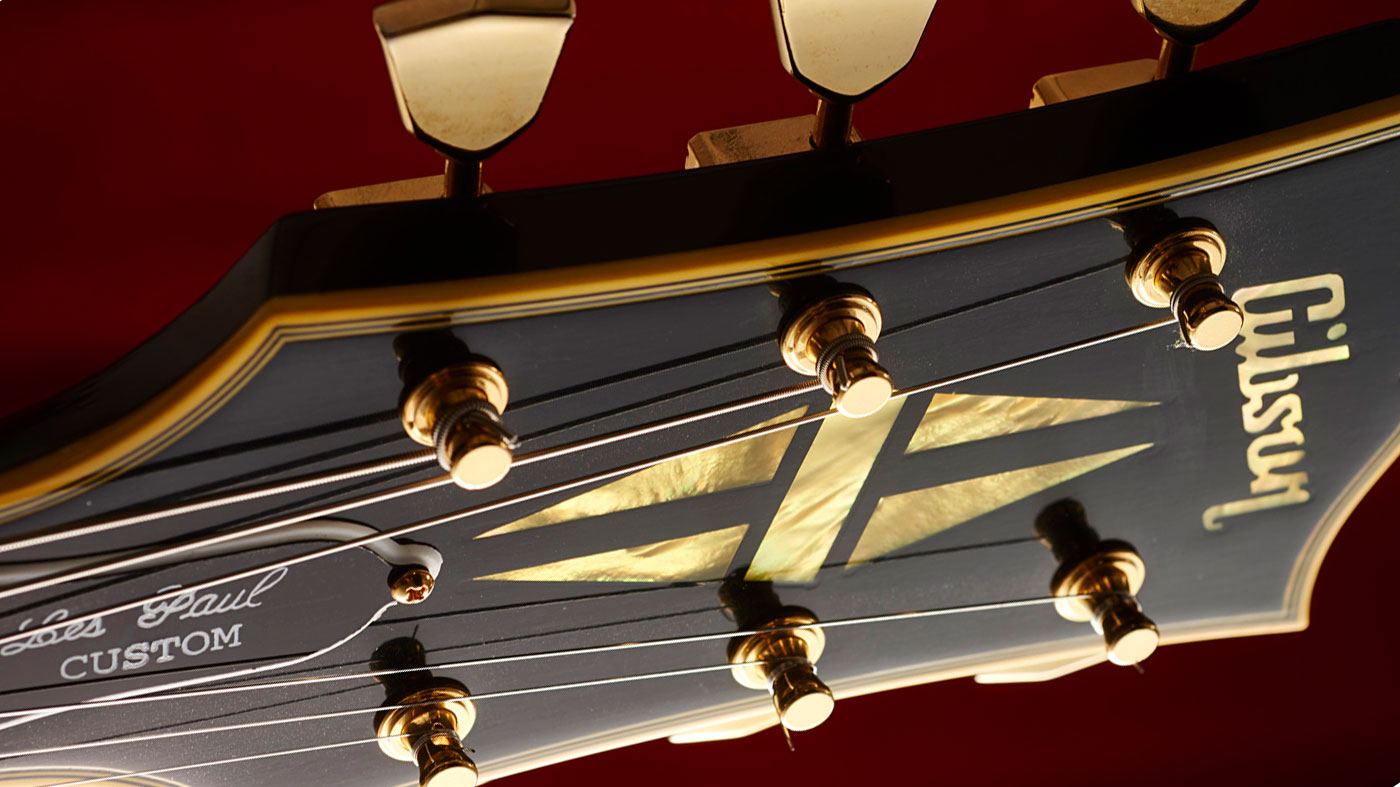
Black Market
A buyer’s guide to the Les Paul Custom.
Now, as in 1954, the Les Paul Custom is an aspirational choice with a price tag to match. Head to the Gibson website in 2017 and - putting aside the signature guitars - you’ll find two choices.
The top-dollar option is the True Historic 1957 Custom, putting period-correct features and twin-humbucker performance in your hands
Of these, the top-dollar option is the True Historic 1957 Custom, putting period-correct features and twin-humbucker performance in your hands for circa £5,500. That’s undercut by the stock Custom, which offers a credible 490R/498T configuration and a choice of finishes for south of four grand.
If that’s still a little too ‘executive’ for your liking, the answer could be an Epiphone. Priced around £440, the Les Paul Custom Pro looks the part, approximates the roar of PAFs with its coil-splittable ProBuckers and is available as a lefty.
Epiphone is also your cheap ticket to triple-humbucker action in the form of the Les Paul Black Beauty (£540), while P-90 purists should consider the Inspired By 1955 model (£580).

